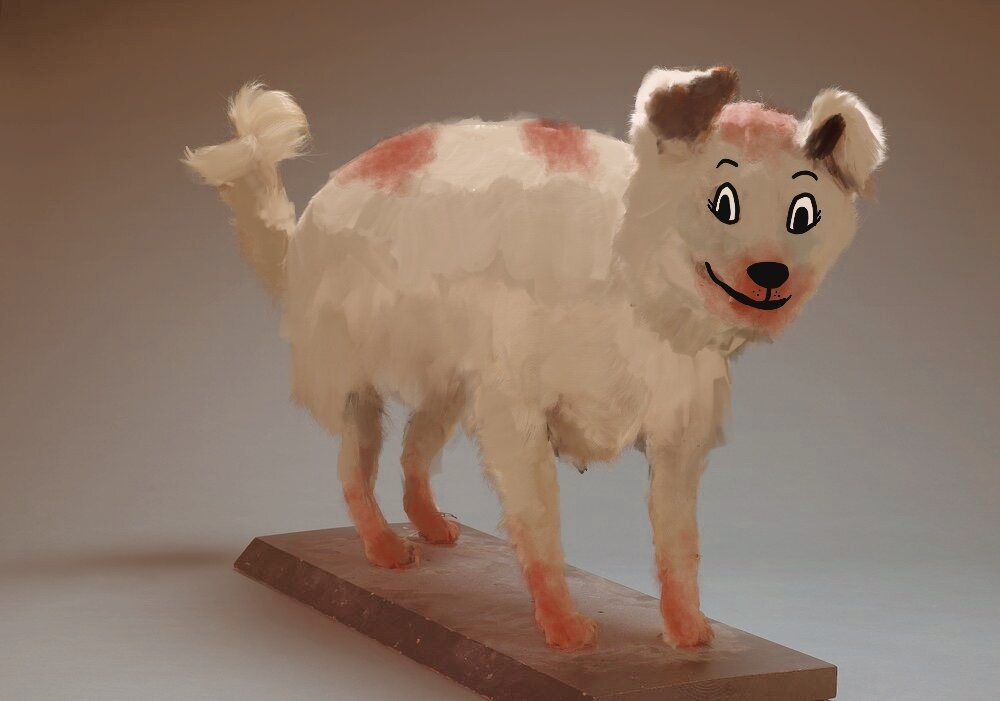Tapu, Noa, Kōkōwai and the Everyday
nā Sarah Hudson, August 2021
Kōkōwai was used in ceremony, and adorned tapu objects. We also know that our tīpuna adorned their skin with earth colours, including red. We’re interested in the ‘everyday’ ways in which kōkōwai was a part of the lives of our tīpuna, and how it could be incorperated into our lives today.
It’s not blood! It’s kōkōwai and my artitic interpretation of this taxidermy kurī at Te Papa
We’ve seen taonga in museum collections that show traces of kōkōwai. Many of these items are ‘everyday’ items like heru or toggles from the back of necklaces. Below are a couple of taonga that have caught our imagination…
Auckland Museum holds taonga from an archelogical dig at Oruarangi in the Tīkapa Moana o Hauraki. One part of the dig was a kōkōwai processing site. There were grindstones made from kōkawa (Andesite) and an oven for baking kōkōwai. There was such a large amount of kōkōwai being processed here, that the ground was thick with red ochre. Archeologists even found dog poops that contained kōkōwai within!
Immediately I was struck with the imagery of a kurī snuffling around the worksite, perhaps smooching up to some humans and getting a few red-coloured pats while it was at arms reach.
The idea of a cute pooch being around kōkōwai for so long that it ingests it, suggests an unrestricted sense of noa to this idea of a kōkōwai processing. For a place as abundant as Oruarangi, gathering, grinding, baking and processing kōkōwai seems to be another everyday task.
Another taonga that has caught my imagination is a pōtaka tā (whipping top) at Puke Ariki in Ngāmotu. Pōtaka tā was a pasttime enjoyed by tamariki and pākeke alike. Our tīpuna made areas for playing with Pōtaka tā, some had little ramps, others mini boundaries for territorial battles.
At Puke Ariki, I saw a stone Pōtaka tā with traces of kōkōwai on it. Perhaps a skilled top-whipper took the Pōtaka tā for a spin through a kōkōwai work area?
Whatever the case, this is a object that would typically classed as a toy, not typically associated with tapu in any way.
My drawing of the Pōtaka Tā with traces of kōkōwai in Puke Ariki, Ngā Motu.
Image from A. W. Reed’s Illustrated Encyclopedia of Māori Life
Kōkōwai continues today to be used to communicate tapu, I am grateful to the fact that we still have mātauranga to guide us in our contemporary tikanga.
The taonga above, suggest that kōkōwai was a part of everyday life, as well as being used in ceremony. Evidence of the use of red ochre in both tapu and noa contexts reiterate the all encompassing nature of Māori use of kōkōwai. Perhaps that’s the underpinning notion of importance here, tapu and noa exist together in balance. You can’t have one without the other, the significance is in the acknowledgement and the practice of both of those states of being.


